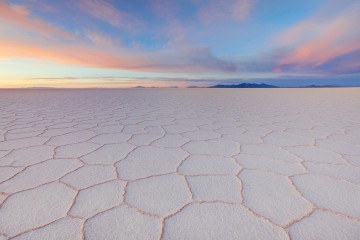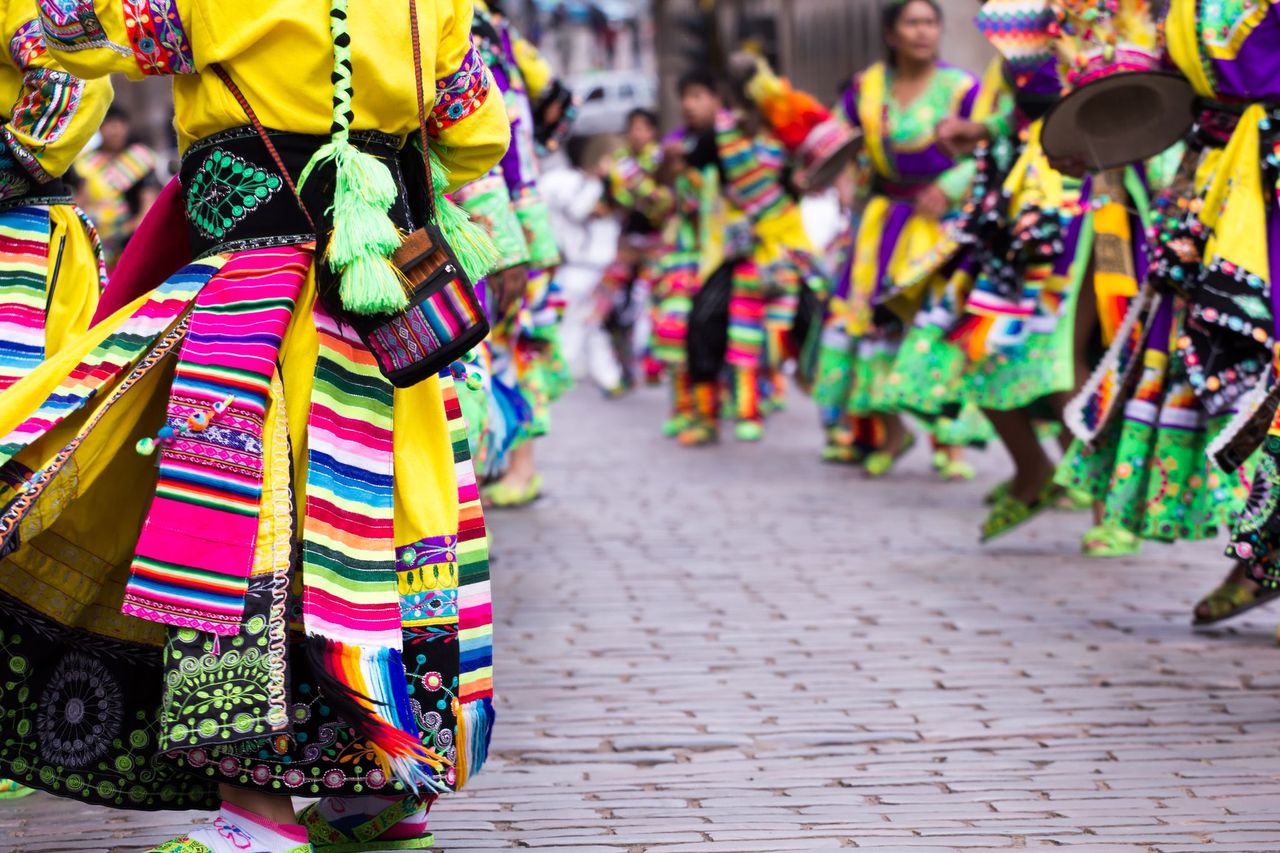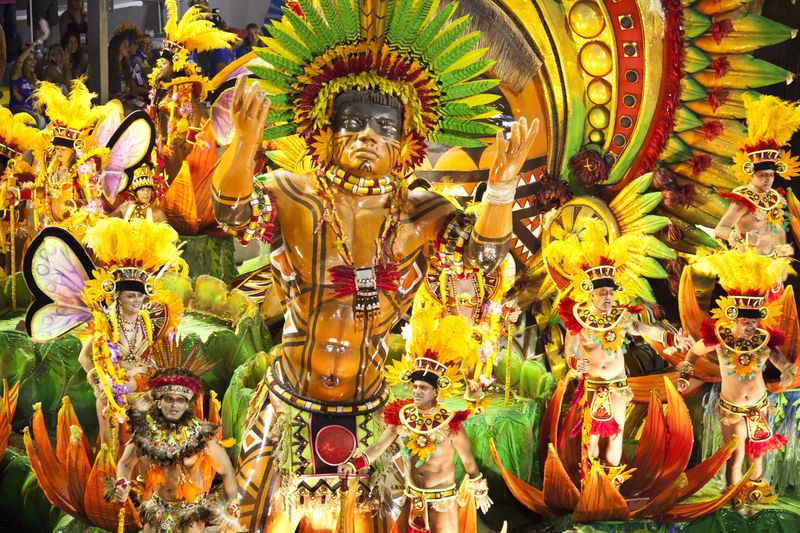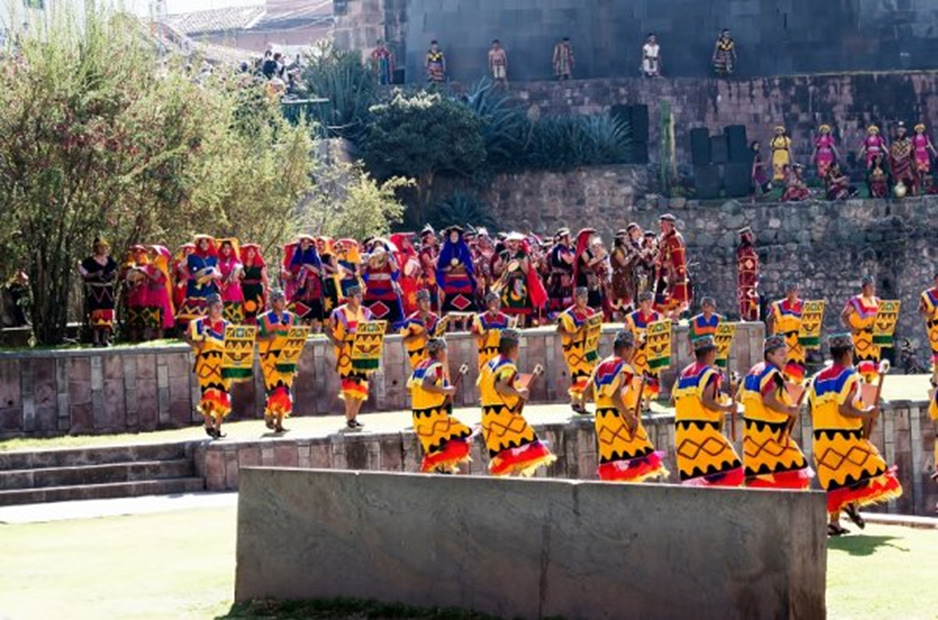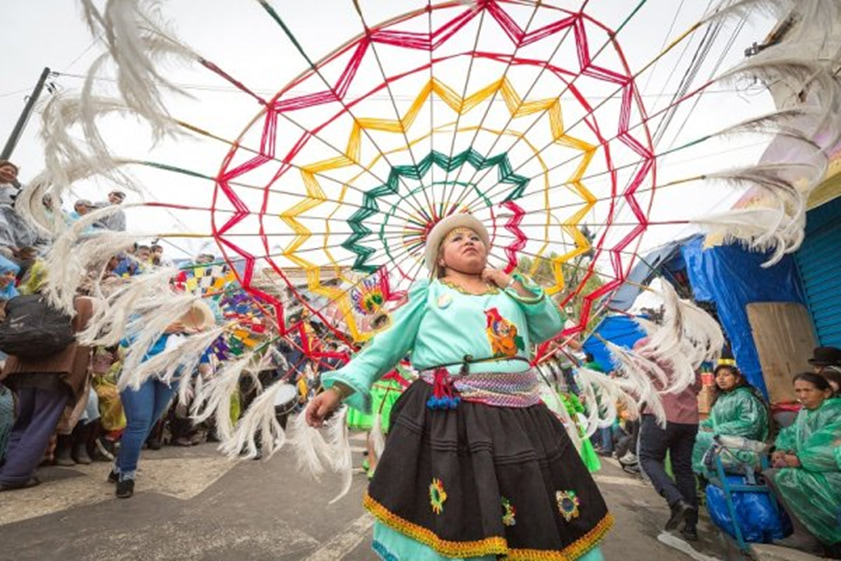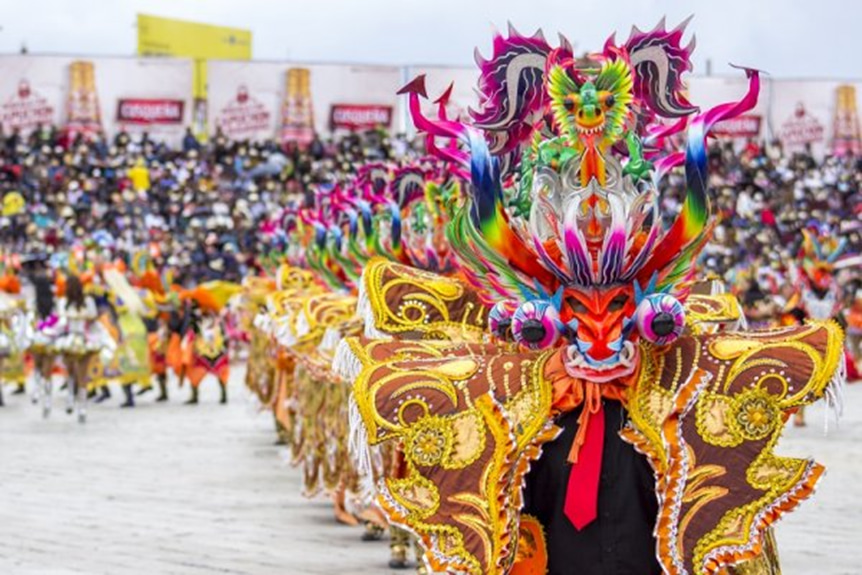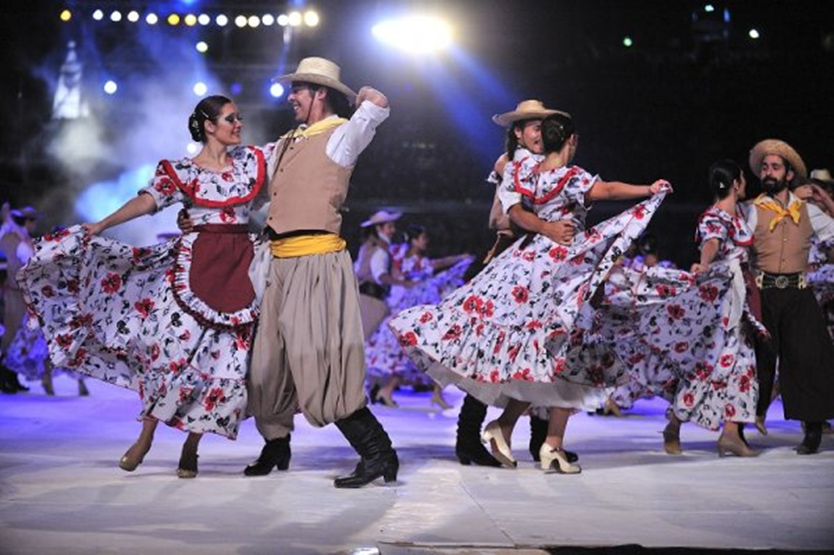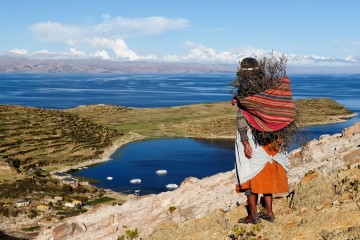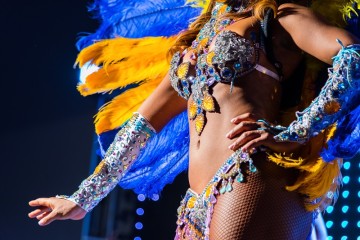January
3rd Thursday, Fiesta de la Santa Tierra – Amantani Island, Lake Titicaca, Peru
On the third Thursday of January, the sacred temples of Pachamama and Pachatata open for a single day. Locals hike up to make offerings and pray for a fruitful year ahead. This quiet yet moving celebration is one of the most spiritually rich cultural events in the Andes.
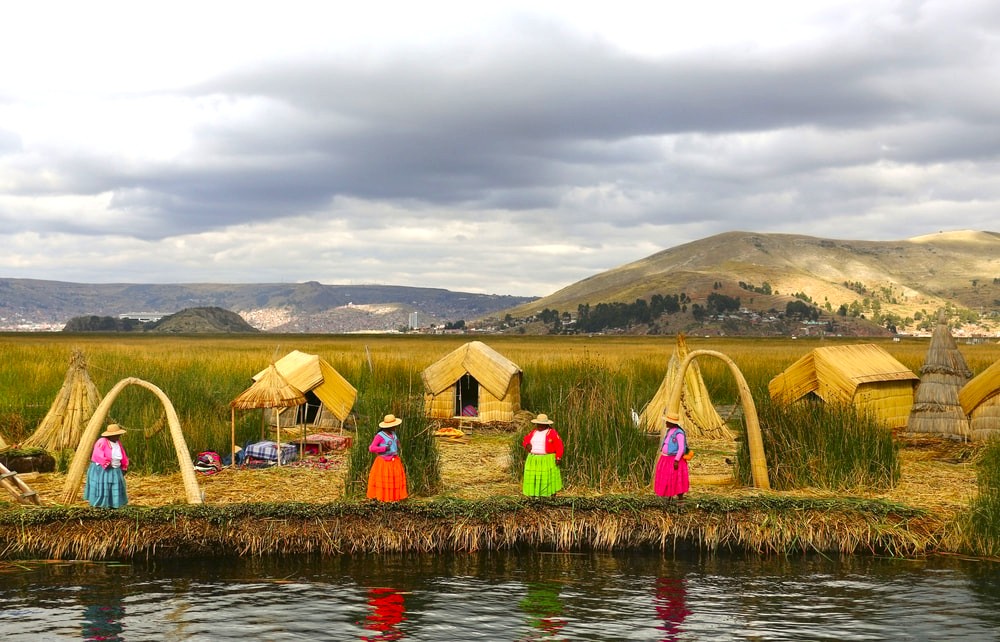
Lake Titicaca is the highest navigable lake on earth, a place “where the sky meets the sacred waters.
February
2nd Thursday, Virgen de la Candelaria – Puno, Peru & Copacabana, Bolivia
One of South America's most dazzling religious festivals, this two-week celebration brings the Andes to life.
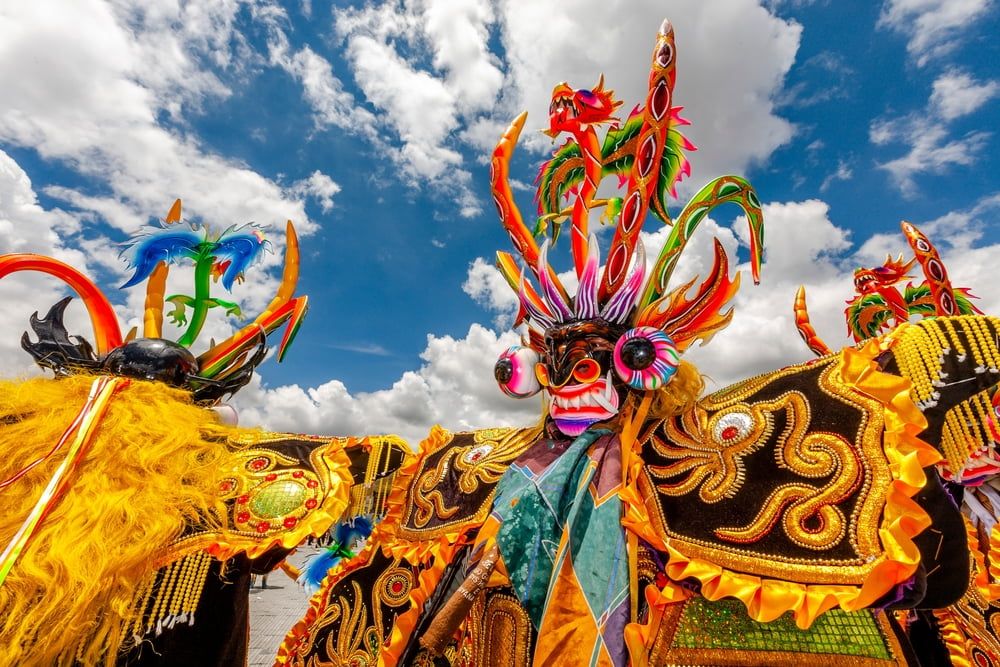
A breathtaking explosion of faith and color, this Andean spectacle transforms South America into a living tapestry of tradition, dance, and devotion.
17th-20th, Oruro Carnival – Bolivia
Recognised by UNESCO and unlike anything else in the region, the Oruro Carnival is full of theatrical dances and mythical storytelling.
(Varies) Carnaval – Across South America
Rio might steal the spotlight at this time of year, yet Carnaval is a continent-wide cultural event that's celebrated in countless towns and cities. Barranquilla in Colombia, Gualeguaychú in Argentina, and Montevideo in Uruguay all host their own takes on this legendary fiesta.
March
3rd-6th Vendimia – Mendoza, Argentina
Argentina’s most famous event in South America is a toast to the grape harvest. You’ll find more details earlier in the guide.
April
(Varies)Semana Santa – Throughout South America
Holy Easter Week brings candlelit processions and re-enactments to cities like Ayacucho (Peru), Quito (Ecuador), and Popayán (Colombia). Some towns are filled with purple-robed penitents and flower-strewn altars—it’s one of the busiest travel weeks on the South American calendar.
15th–20th – Peruvian Paso Horse Festival, Lima, Peru
The Peruvian Paso is famous for its uniquely smooth gait. If you've ridden one, you'll know exactly why they're so special. This five-day event in Lima is a celebration of this national icon and features expert dressage. The daily highlight is the Marinera dance, where a woman dances with a rider atop a prized Paso horse.
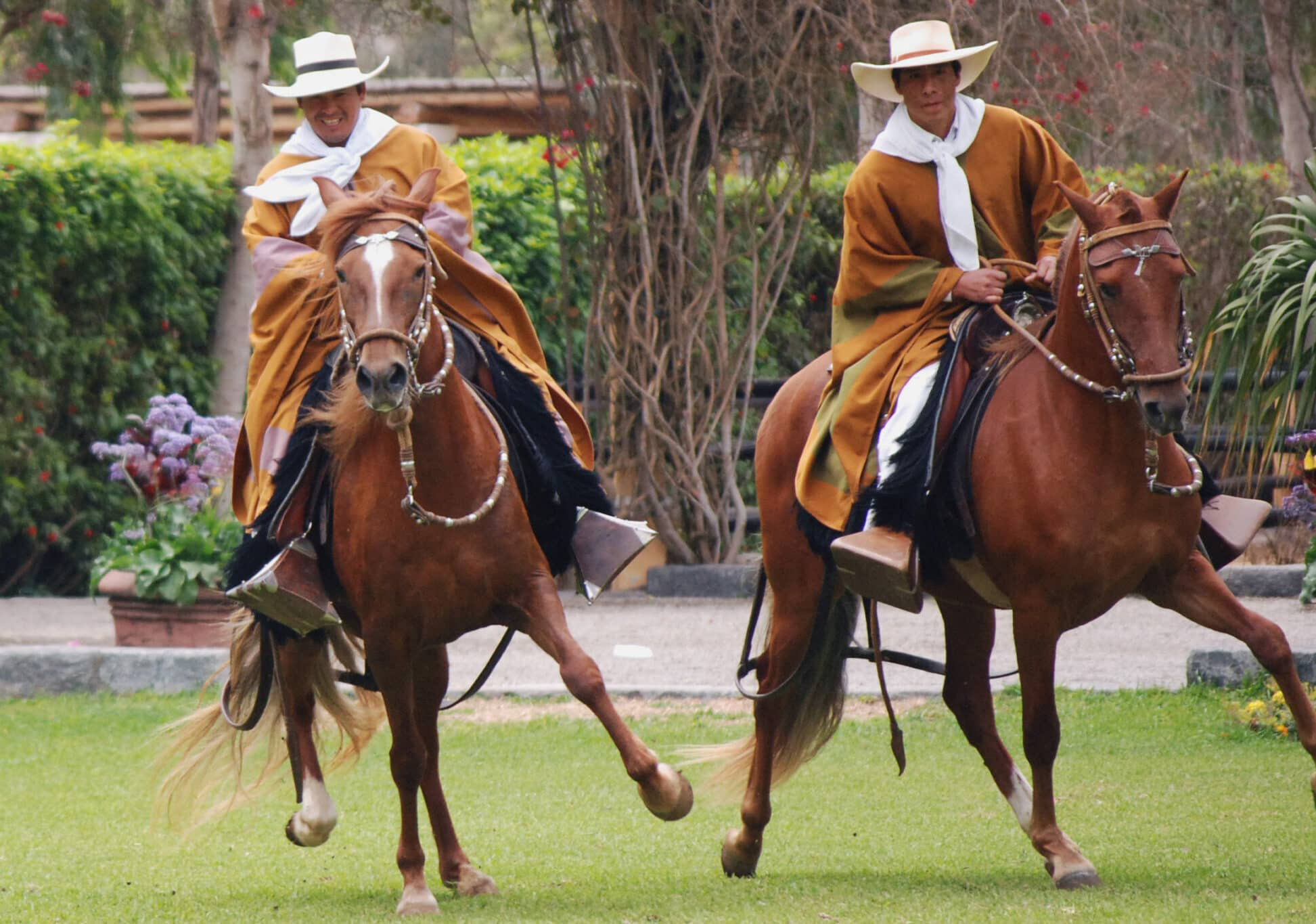
Peruvian Paso horses are born with two extra gaits: the smooth Paso Llano and the faster Sobreandando, making them one of the world’s most comfortable rides.
May
3rd, Fiesta de la Cruz – Andes Region
When the Spaniards conquered the Incas, they tried replacing indigenous rituals with Christian traditions. Today, both cultures blend in celebrations where elaborately decorated wooden crosses—adorned with flowers and traditional fabrics—are carried in procession to local churches, especially in rural areas.
June
8th, Corpus Christi – Peru & Ecuador
In towns like Pujilí, towering headdresses, masked dancers, and saints are carried through the streets. This is Christianity with deep indigenous flair—vibrant, respectful, and full of symbolism.
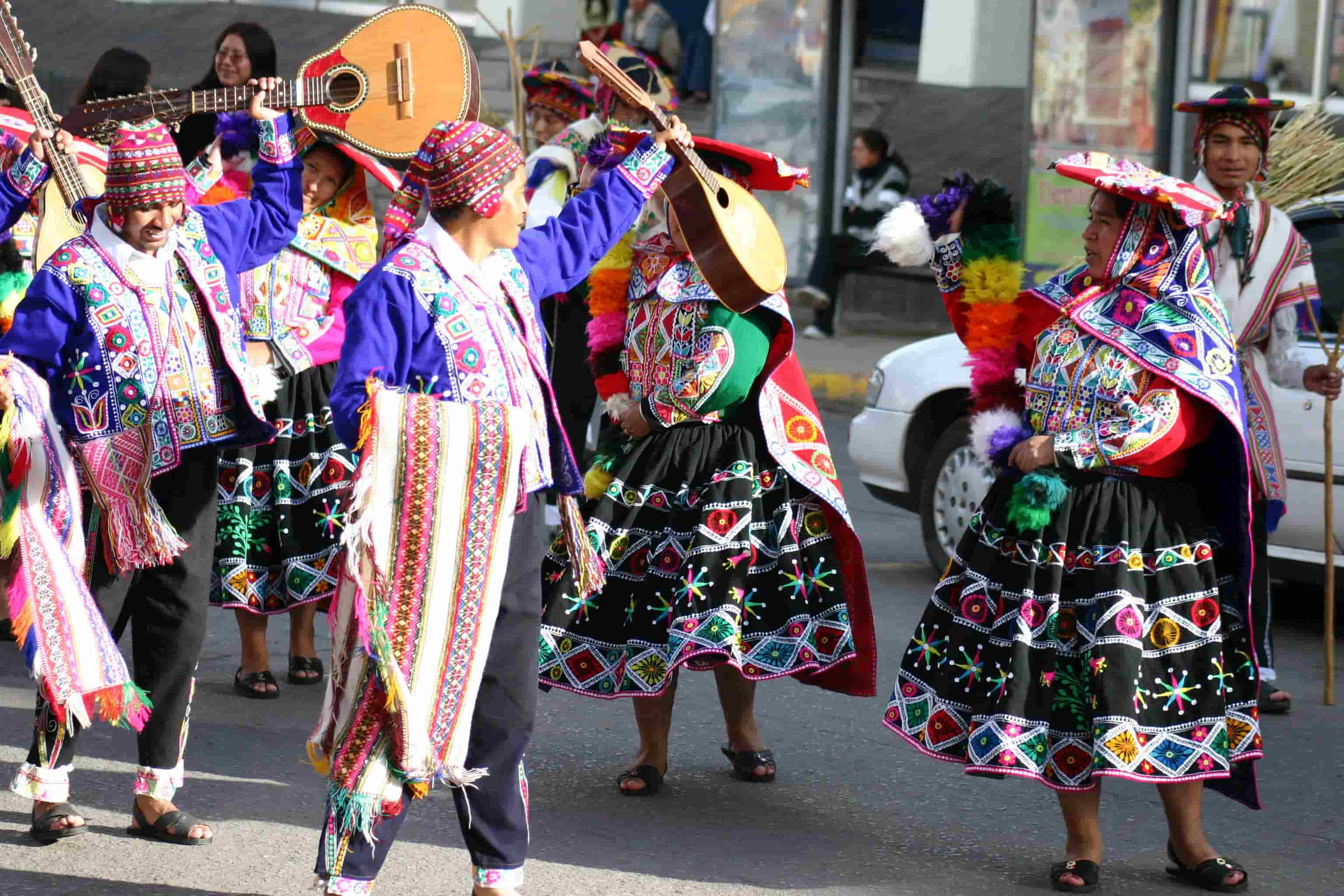
16th, Festival of the Gaucho, Salta, Argentina
June is ideal for exploring Argentina’s famous Northern Route 40, and Salta's gaucho festival on the 16th makes it even better. Over 2,000 skilled horsemen gather for vibrant parades and ceremonies, celebrating their ancestors' crucial role in securing independence from Spain in 1813. Expect impressive horsemanship, leather-clad gauchos, delicious food, fine wine, and plenty of festive cheer.
21st, Aymara New Year, Tiwanaku, Bolivia
Bolivia's Indigenous New Year was revived by President Morales, with the most prominent celebration hosted at UNESCO-listed Tiwanaku, a remarkable pre-Columbian site on Lake Titicaca's shores. This 3,000-year-old archaeological gem hosts a sunrise ceremony on the Winter Solstice. If you're touring Bolivia at the right time, don't miss it!
24th, Inti Raymi – Cusco, Peru
Gold-clad Inca ‘nobility’ leads the rituals at Sacsayhuamán, bringing ancient rites back to life. Full details above.
24th, Chaccu Nacional de la Vicuña, Ayacucho, Peru
Established in 1964, Peru's Pampa Galeras Reserve protects the vicuña, revered for producing the world's finest wool. The annual Chaccu festival is actually an ancient Inca tradition that has been recently resurrected. Nowadays, the event highlights sustainable shearing in the highlands of Peru, supports local communities, and helps prevent poach. It's a very rewarding detour from Lima if you're heading south to Nazca and the Ballestas Islands.
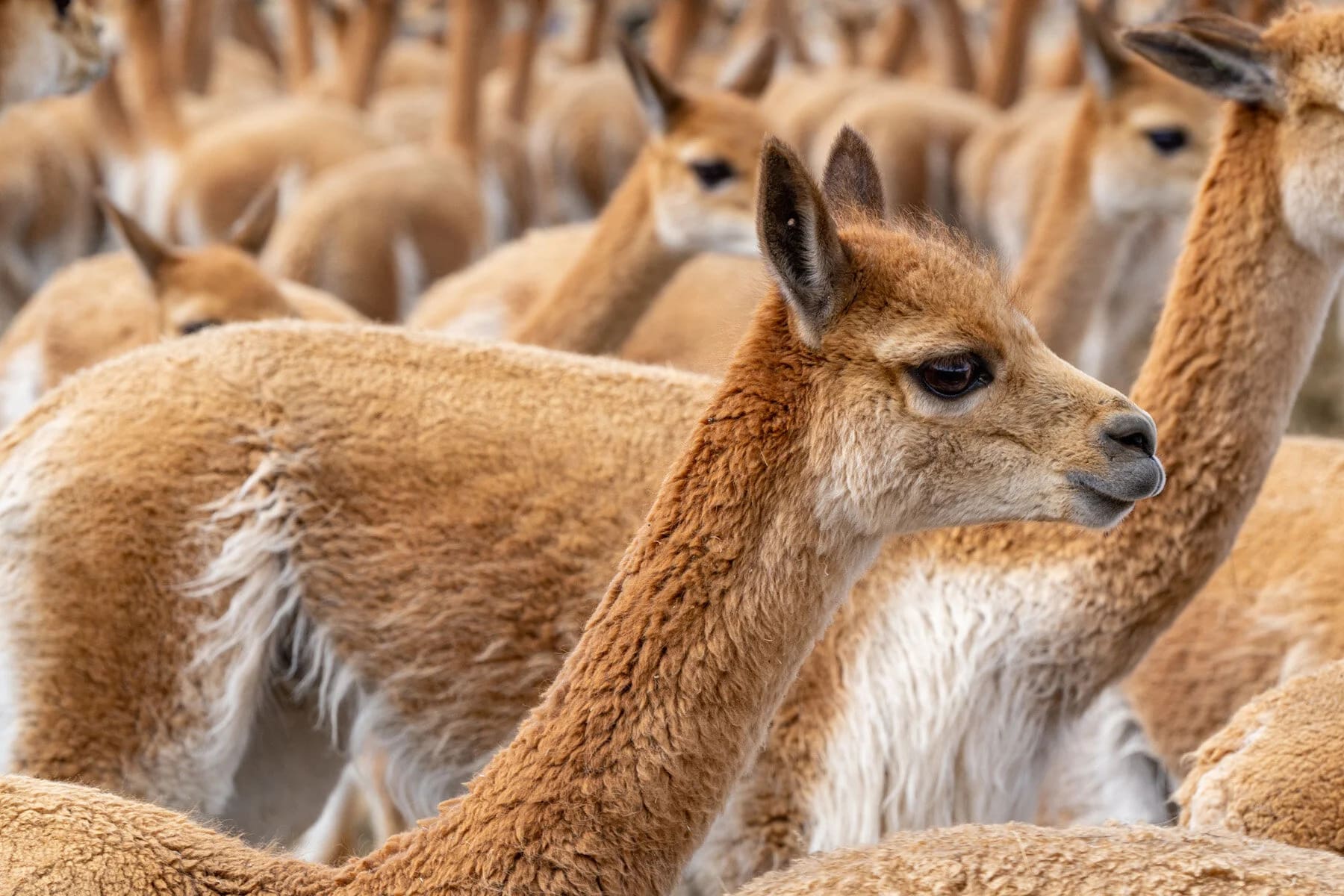
The vicuña, a wild relative of the llama, is prized for producing the finest and most valuable wool in the world.
July
15th- 17th, Virgen del Carmen, Paucartambo, Cusco, Peru
This festival celebrates the patron saint of the Cusco region. and peaks in Paucartambo, a small village three hours from Cusco. Expect to see lively parades, music, and lots of dancing.
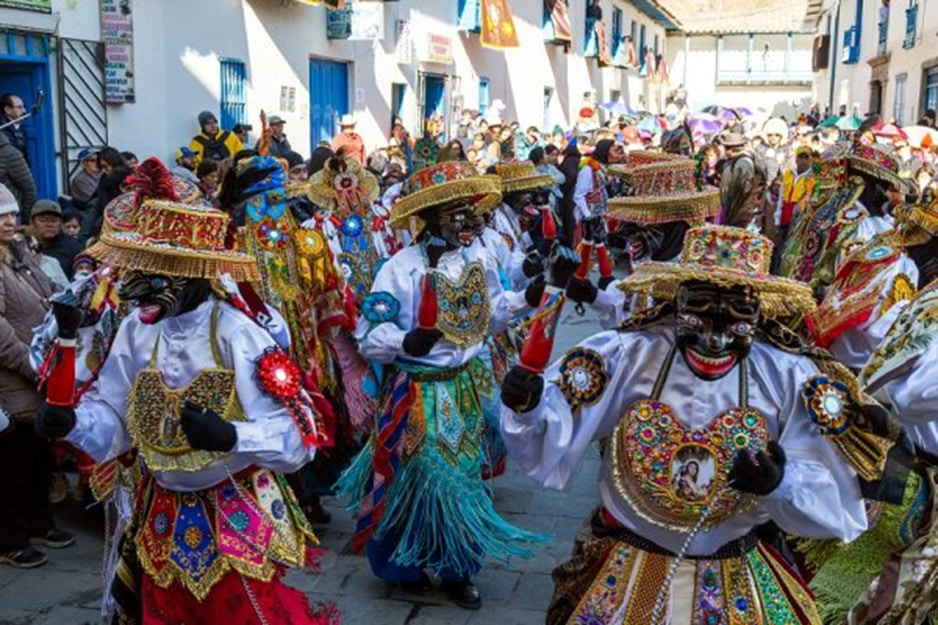
Virgen del Carmen festival in Peru, South America
August
14th–18th, International Tango Festival, Buenos Aires, Argentina
The world's largest tango festival fills the streets of Buenos Aires with passion, rhythm, and dance. Not a huge stretch from the norm, truth be told, but even more enticing. Hundreds of performances by top dancers from Argentina and beyond create an irresistible atmosphere, making August the best month to experience tango in the Argentine capital.
3rd Week – Virgin of Urkupina Festival, Quillacollo, Bolivia
Legend has it that, many moons ago, the Virgin Mary once appeared to a shepherdess in Quillacollo, turning stones into gold. Now, each year, more than half a million pilgrims come together for colourful parades and celebrations, creating a joyful procession up the hill where this miraculous vision took place.
September
Varies – Mistura, Lima, Peru
South America's biggest food festival shines a spotlight on Peruvian cuisine every September (sometimes August—be sure to check!). Wander through over 100 food stalls and watch talented chefs highlight the country's amazing flavors. It's a delightful experience for any food lover!
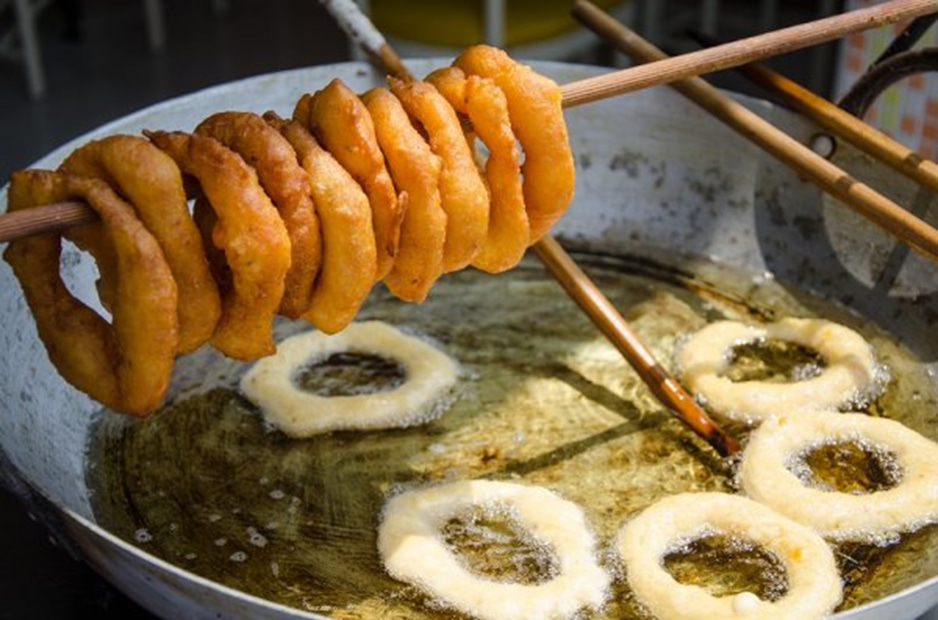
Traditional Peruvian sweets picarones.
October
Festival of the Lord of Miracles – Lima, Peru
Tens of thousands walk through Lima in purple robes, following an image of Christ believed to have survived an earthquake. It is one of the most deeply felt cultural events in South America, full of prayer, song, and solemn celebration.
31st (until 2nd November) – Día de la Canción Criolla, Peru
This festival celebrates Peru's rich Creole musical heritage, especially cherished in Lima and the southern coast.
November
1st & 2nd – Day of the Dead, Continent-wide
Mexico hosts perhaps the most famous Day of the Dead celebrations in all of Latin America but its southerly neighbours, particularly Bolivia, put on a great fiesta as well to remember the dearly departed. Once upon a time, the ritual of celebrating the dead used to entail digging up skulls and decorating them with glee. Nowadays, you'll only see this tradition carried out in Bolivia and, in our books, that's reason enough to make it a must-see!
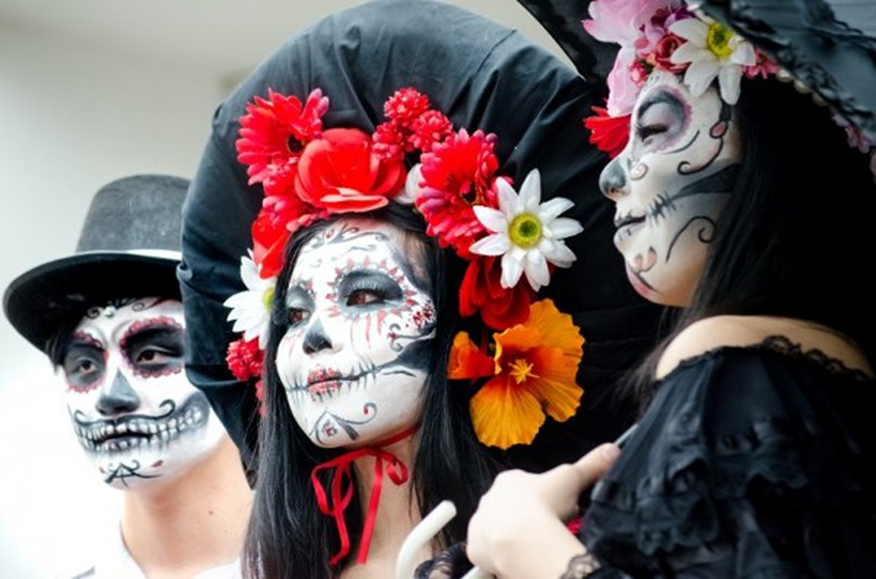
Day of the Dead Celebrations in Latin America
1st–8th – Manco Capac Festival, Puno, Peru
Puno dedicates a week in early November to celebrating Manco Capac, the legendary founder of the Inca civilisation, believed to have risen from Lake Titicaca. Expect a lot of music, dancing, food and alcohol.
December
24th – Santikuraray, Cusco, Peru
On Christmas Eve, Cusco’s Plaza de Armas transforms into one of Peru’s largest handicraft markets, offering artisanal nativity figures and festive souvenirs—a fantastic seasonal event for visitors.
Travel Tips for Festival-Goers
Book early: Hotels, flights, and domestic transport fill up quickly around major festivals, especially during Easter Week. Plan and book ahead so you don't miss out.
Dress appropriately: Andean nights are cold, no matter what time of year you visit—layers are key.
Respect the local culture: Some cultural events have sacred elements, and highland cultures are highly traditional (and conservative) anyway, so please always observe respectfully.
Bring cash: Many festivals take place in rural areas where cards aren’t accepted.
Work with local experts: at Viva, we can plan your departure to align with any festival you’re keen to attend. Just let us know which event you’ve got your eye on, and we’ll make sure you’re in the right place at just the right time.
Our list of South American festivals is by no means exhaustive—there are national holidays, local fiestas, and Independence Day celebrations happening all year round. If you’re interested in experiencing events on your trip to South America, contact Viva’s Destination Specialists. They’ll help you find out what’s on during your visit and tailor your journey around it.
Laura Pattara
Laura Pattara writes for Viva Expeditions with a special love for all things Latin America. She had guided overland tours across the continent, reached Machu Picchu five times on foot, and even dressed up as a giant toucan for Carnaval. With a degree in languages and two decades of global travel experience behind her, Laura has a long-standing love for the Andes, soaring condors, and a truly delicious empanada.
|
